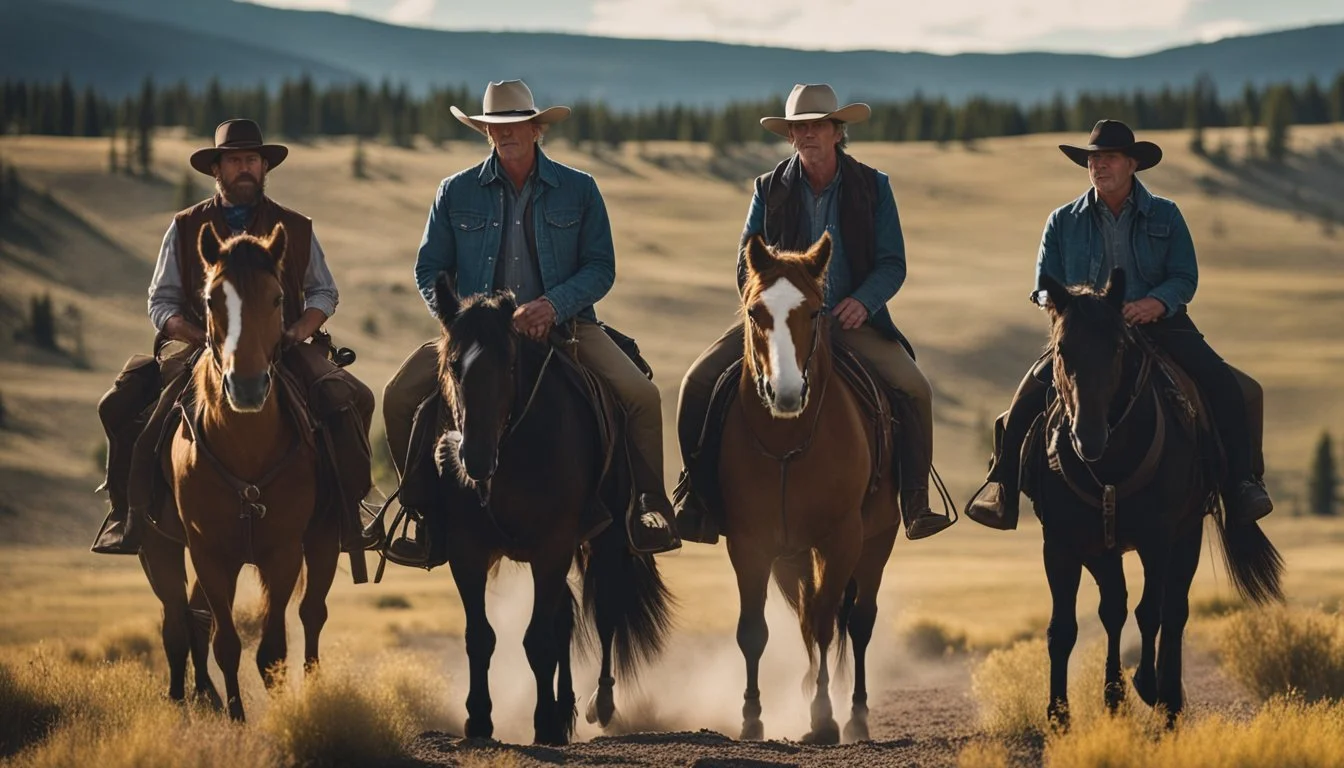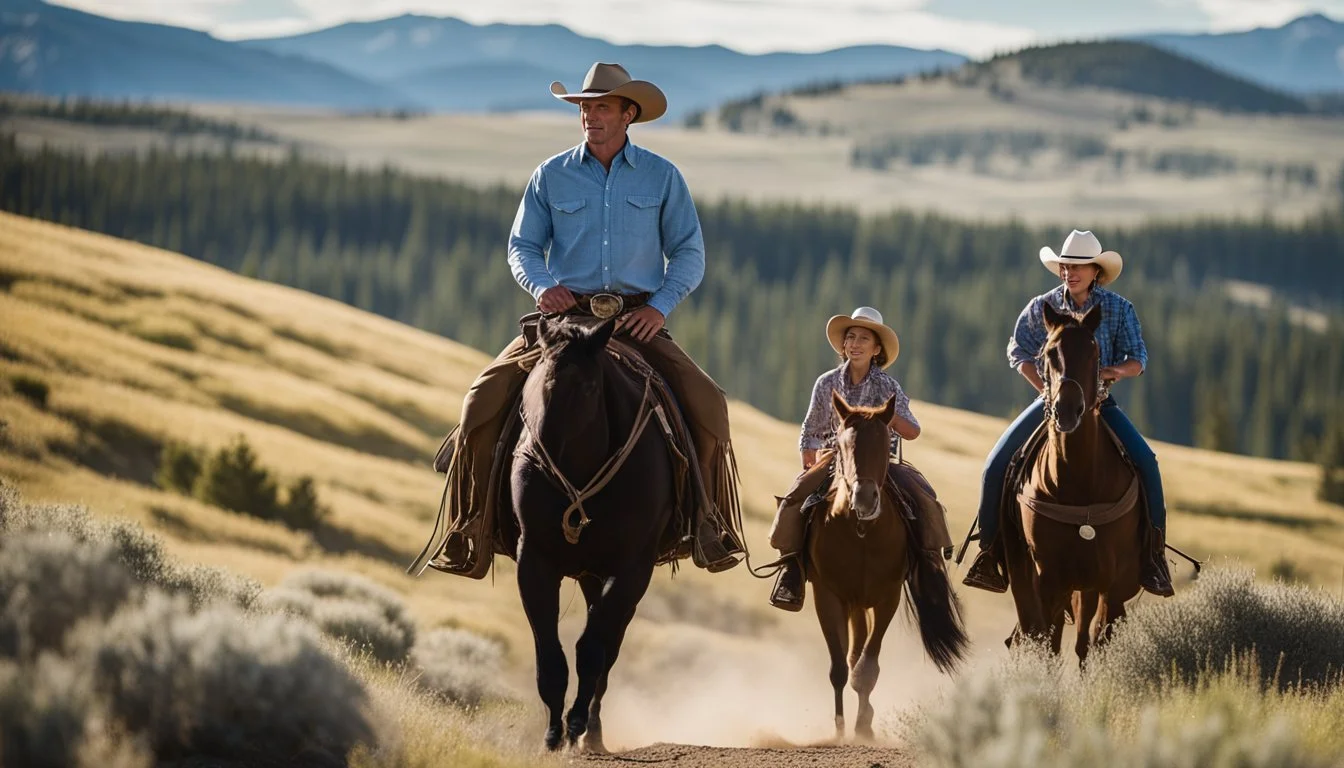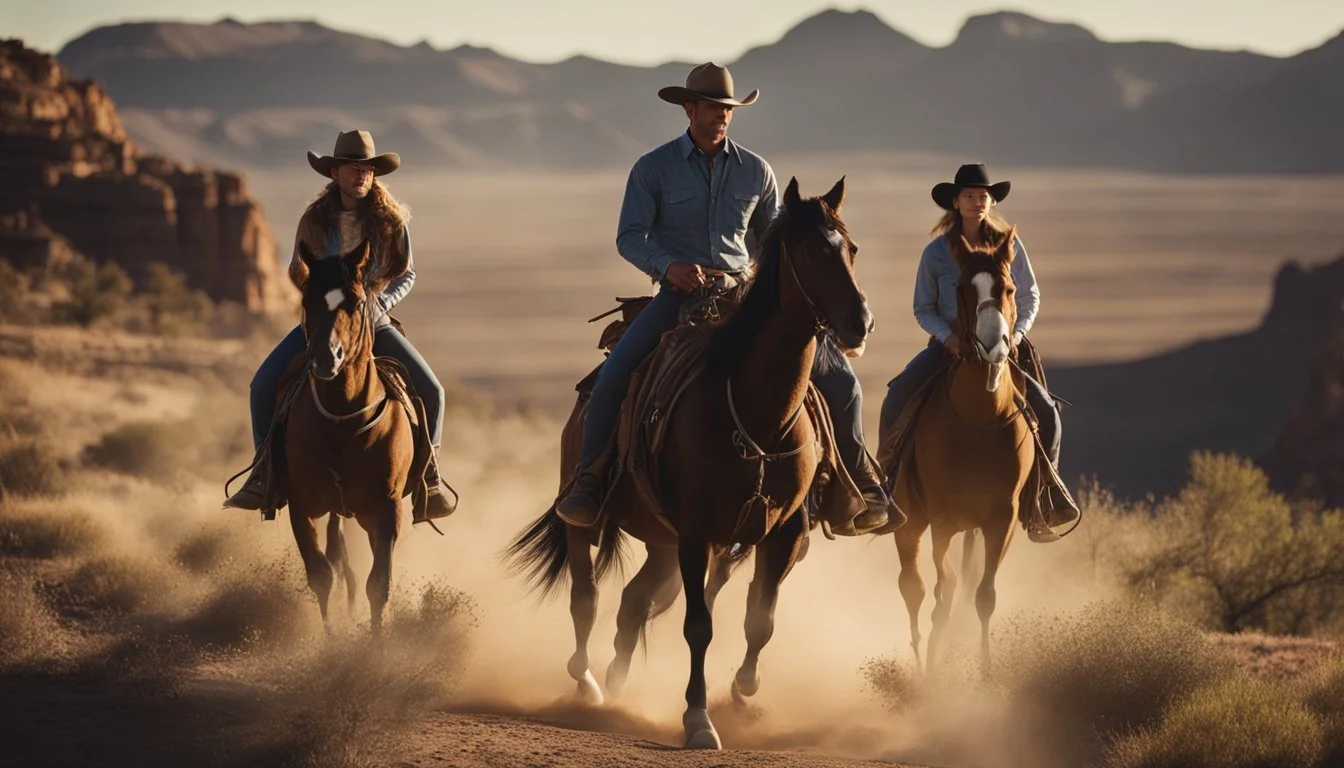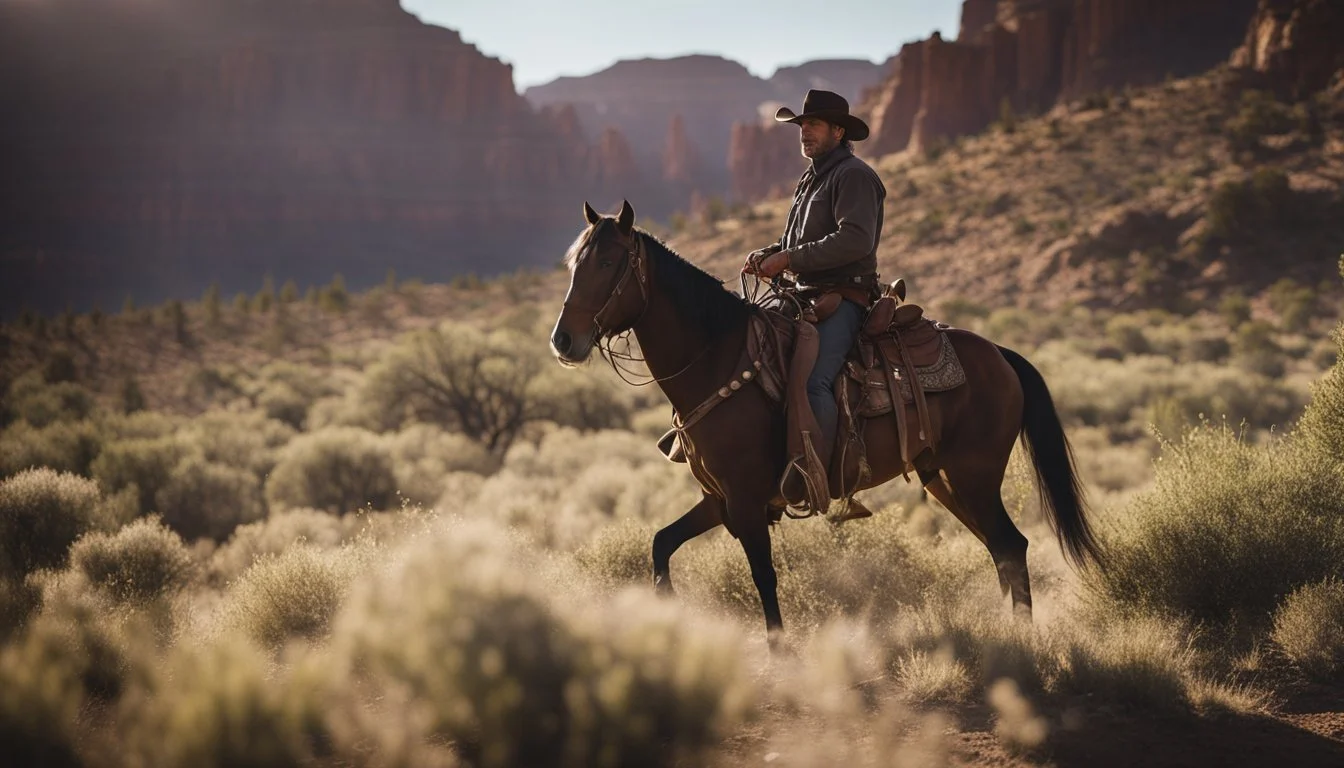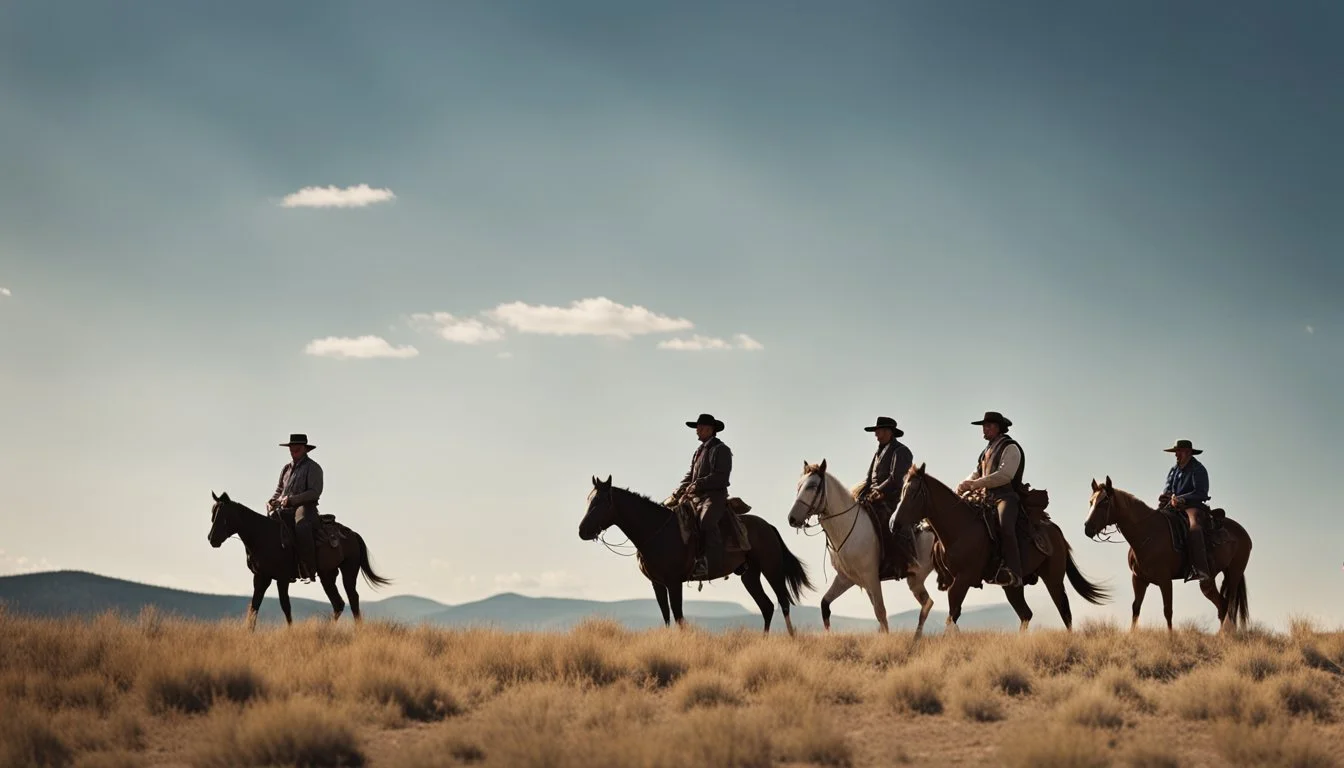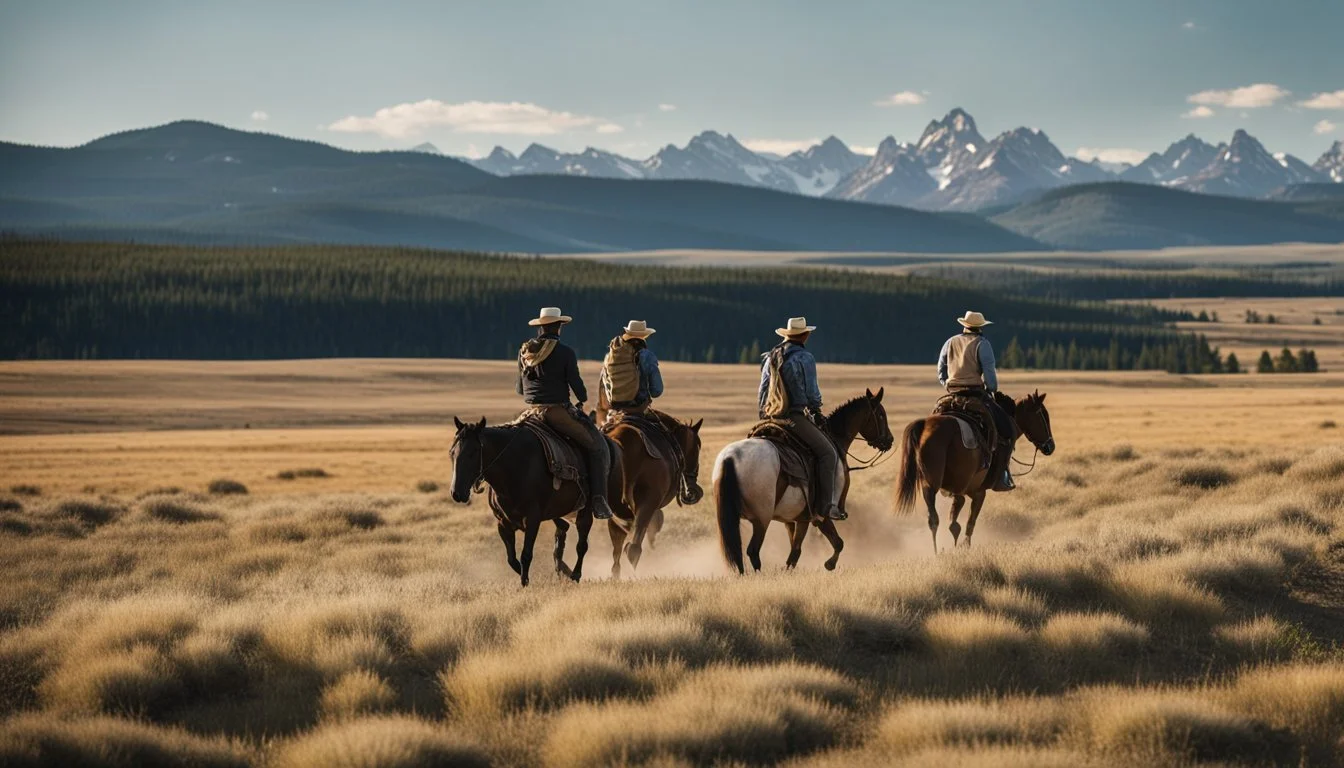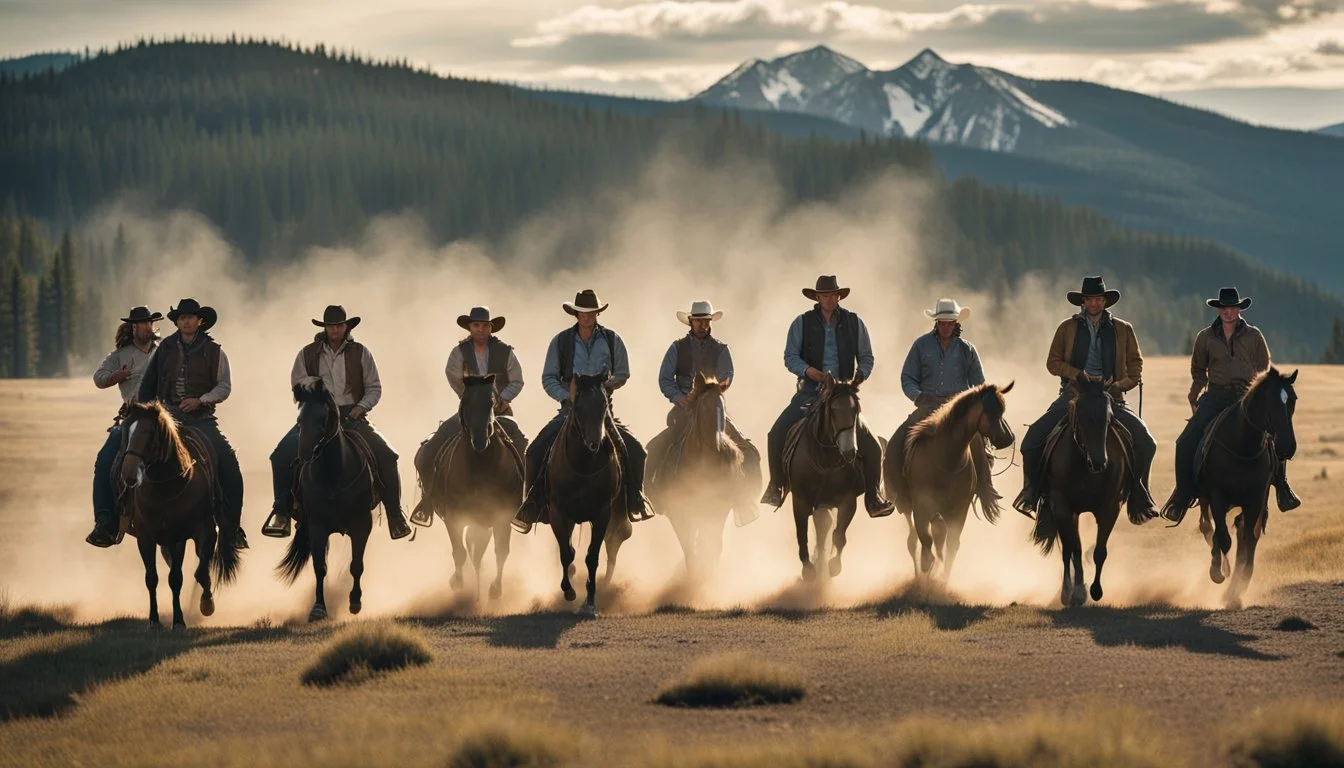John Dutton's Shocking Secret Family Revealed to Upend Yellowstone Forever
John Dutton, the patriarch of the Yellowstone Dutton Ranch, has captivated audiences with his complex character and fierce dedication to his family's legacy. While the show has explored various aspects of John's past, including the revelation of a brother who lived for only eighteen hours, fans have begun to speculate about other potential secrets in his life.
A secret second family for John Dutton could dramatically alter the dynamics of the Yellowstone storyline, introducing new conflicts and potential heirs to the coveted Dutton land. Such a revelation would not only challenge John's relationships with his known children but also raise questions about his true motivations and the extent of his influence beyond the ranch.
The idea of hidden family members is not entirely foreign to the Dutton saga, as the franchise has already delved into the complex family tree spanning generations. From the founding of the ranch by James and Margaret Dutton to the current era led by John Dutton III, each branch of the family has played a crucial role in shaping the Dutton legacy.
The Dutton Family Legacy
The Dutton family's legacy is deeply rooted in the rugged landscape of Montana. Their story spans generations, from the founding of the Yellowstone Ranch to its modern-day prominence.
Founding of the Yellowstone Ranch
James Dutton established the Yellowstone Ranch in the late 19th century. He led his family on a perilous journey from Texas to Montana, seeking a better life. The harsh Montana wilderness tested their resolve, but James's determination laid the foundation for the Dutton empire.
The ranch started as a modest homestead. Through hard work and sacrifice, James and his wife Margaret transformed it into a thriving cattle operation. Their efforts set the stage for future generations of Duttons to expand and defend their land.
Historical Timeline: 1883 to 1923
1883 marked the Duttons' arrival in Montana. James and Margaret, along with their children Elsa and John, faced numerous challenges as they settled the land.
By 1893, the ranch had grown significantly. John Dutton, now a young man, took on more responsibilities in running the family business.
The early 1900s saw the ranch flourish under John's leadership. He expanded the Dutton holdings and solidified their position as a powerful ranching family in Montana.
1923 brought new challenges. John Dutton, now the family patriarch, faced threats from modernization and changing economic landscapes.
Significance of the Dutton Ranch in Montana
The Yellowstone Dutton Ranch became a symbol of the American West. It represents the enduring spirit of ranching culture in Montana.
The ranch's vast acreage makes it a significant economic force in the region. It provides jobs and contributes to the local economy through its cattle operations.
Politically, the Duttons wield considerable influence. Their land holdings and historical presence give them a strong voice in Montana's affairs.
The ranch also serves as a bulwark against encroaching development. The Duttons' efforts to preserve their land help maintain Montana's natural beauty and wildlife habitats.
John Dutton's Complex Persona
John Dutton III, portrayed by Kevin Costner, embodies a multifaceted character at the heart of Yellowstone. His unwavering dedication to preserving his family's legacy clashes with the changing world around him, creating a compelling internal struggle.
Character Analysis: John Dutton III
John Dutton III is a rugged, determined rancher with an unyielding commitment to his land. His stern demeanor masks a deep love for his family and a fierce protectiveness of his heritage. Dutton's complex nature is evident in his interactions with both allies and adversaries.
He often employs ruthless tactics to defend his interests, yet shows moments of vulnerability with his children. This duality creates a character that is both admirable and morally ambiguous.
John's leadership style is authoritative and sometimes manipulative. He struggles to balance his roles as a father, businessman, and steward of the land.
Comparing John Dutton Across Generations
The Dutton family tree reveals a lineage of strong-willed patriarchs. John Dutton III shares traits with his predecessors, John Dutton Sr. and John Dutton Jr., but faces unique challenges in the modern era.
Like his forebears, John III values tradition and family above all else. However, he must navigate more complex legal and political landscapes to protect his interests.
The generational differences are evident in John's relationships with his children. He struggles to understand their modern perspectives while trying to instill traditional values.
Relationship Dynamics Within the Dutton Family
John's interactions with his children form the emotional core of his character. His relationships are often strained by his high expectations and the weight of the Dutton legacy.
With Beth, his daughter, John shares a special bond. He admires her fierce loyalty and business acumen, even as they clash over personal matters.
John's relationship with his son Kayce is more turbulent, marked by periods of estrangement and reconciliation. His interactions with Jamie, his adopted son, are particularly complex, filled with trust issues and power struggles.
These family dynamics reveal John's capacity for both love and ruthlessness, further highlighting the intricacies of his character.
The Hypothetical Second Family
The possibility of John Dutton having a secret second family would dramatically alter the dynamics of the Yellowstone universe. This scenario introduces new characters, shifts power balances, and creates potential for riveting storylines.
Implications for the Dutton Legacy
John Dutton's hypothetical second family could significantly impact the Dutton legacy. This revelation might challenge the legitimacy of his current heirs' claims to the Yellowstone Ranch. The existence of additional Dutton children could create legal battles over inheritance rights and control of the family empire.
These new family members might possess skills or resources that could either strengthen or threaten the Duttons' hold on their land. Their emergence could also attract new enemies or allies, potentially reshaping the political and economic landscape of Montana.
Potential Storylines and Character Introductions
The introduction of a secret Dutton family branch opens up numerous storytelling possibilities:
A long-lost Dutton child seeking recognition
Sibling rivalries between the two family groups
Secret alliances forming within the extended family
New characters could include:
A charismatic half-sibling challenging Beth's business acumen
A skilled rancher rivaling Kayce's abilities
An outsider with deep connections to John's past
These additions would inject fresh energy into the series, creating complex relationships and conflicts.
Impact on the Dutton Family Dynamics
The revelation of a second family would undoubtedly strain John's relationships with his known children. Trust issues could arise, potentially fracturing the tight-knit Dutton clan. Beth, Kayce, and Jamie might question their father's loyalty and honesty.
This situation could force John to confront his past decisions and their consequences. It might lead to unexpected alliances or deepened rifts within the family. The struggle for John's affection and approval could intensify, adding another layer of complexity to the already intricate Dutton family dynamics.
Character Depth and Development
John Dutton's secret second family would add layers of complexity to the already intricate web of relationships in Yellowstone. This twist would impact the existing characters' development and introduce new dynamics to explore.
Prominent Dutton Family Members
John Dutton's character would gain additional depth as he navigates the challenges of maintaining two separate families. His loyalty and dedication to preserving his legacy would be tested in new ways.
Beth Dutton's fierce protectiveness of her father might intensify if she discovers his secret. Her relationship with John could become more strained, potentially leading to deeper exploration of her trust issues.
Kayce Dutton might find himself torn between his existing family obligations and newfound half-siblings. This could create interesting conflicts with his wife Monica and son Tate.
Jamie Dutton's complex relationship with John could take on new dimensions. The revelation might push him further away from the family or lead to unexpected alliances.
Guest Characters and New Faces
The introduction of John's secret family would bring fresh faces to the show. These new characters would have their own motivations, conflicts, and connections to explore.
Half-siblings to the existing Dutton children could range from allies to rivals, adding new dynamics to family gatherings and business decisions.
A secret spouse or long-term partner for John would create tension with his current relationships and potentially challenge his authority on the ranch.
Evolution of Characters Over Seasons
As the secret family storyline unfolds, characters would evolve in response to this new reality.
John might struggle with guilt and attempt to reconcile his two worlds, leading to personal growth or potential downfall.
The Dutton siblings could band together against the newcomers or fracture further as they process this revelation.
Secondary characters like Rip Wheeler might find their loyalties tested as they navigate the fallout from John's secret.
Long-standing alliances and enemies of the Duttons would need to reassess their strategies in light of this new family dynamic.
Cultural and Historical Context
The Yellowstone series weaves a rich tapestry of American Western culture and history, set against the backdrop of Montana's rugged landscape. It explores complex relationships between ranchers, indigenous peoples, and the land itself, while touching on pivotal historical events that shaped the region.
Depiction of the American West
Yellowstone portrays a modern vision of the American West, blending traditional cowboy culture with contemporary issues. The series showcases iconic Western imagery - vast ranches, cattle drives, and horseback riding. It also highlights the evolving nature of ranching, depicting conflicts between traditional land use and modern development pressures.
The Dutton family embodies the archetype of the tough, self-reliant Western rancher. Their struggle to maintain their way of life reflects broader tensions in the changing West. The show explores themes of loyalty, family legacy, and the enduring mystique of cowboy culture in American society.
Historical Events Within the Series
Yellowstone's narrative is anchored in significant historical events that shaped Montana and the American West. The series references the Civil War through flashbacks to James Dutton's experiences. World War I's impact on the region is explored in the 1923 prequel.
The Oregon Trail, a pivotal route in Western expansion, is mentioned in relation to the Duttons' journey westward. Prohibition, spanning from 1920 to 1933, forms a backdrop for some of the family's early 20th-century experiences. These historical touchstones provide context for the Duttons' multi-generational saga and their deep connection to the land.
Indigenous Peoples and the Broken Rock Reservation
Yellowstone prominently features the fictional Broken Rock Reservation, highlighting complex relationships between indigenous peoples and white settlers. The series explores land disputes, cultural preservation efforts, and the ongoing impacts of historical injustices.
Characters like Thomas Rainwater and Monica Long Dutton provide nuanced portrayals of modern Native American experiences. The show touches on issues such as tribal sovereignty, economic development on reservations, and the preservation of indigenous languages and traditions.
Yellowstone also references historical figures like Comanche warriors, acknowledging the rich and often tragic history of indigenous peoples in the American West. These elements add depth to the series' exploration of cultural conflicts and alliances in contemporary Montana.
Expanding the Yellowstone Universe
The Yellowstone franchise has grown beyond its original series, branching out into various time periods and storylines. These expansions offer deeper insights into the Dutton family's rich history and complex dynamics.
Spinoff Series: 1883 and 1923
Paramount Network launched two prequel series to explore the Dutton family's past. "1883" follows the first generation of Duttons as they journey westward to establish their Montana ranch. The series stars Tim McGraw and Faith Hill as James and Margaret Dutton.
"1923" jumps forward to the early 20th century, featuring Harrison Ford and Helen Mirren as Jacob and Cara Dutton. This spinoff delves into the challenges faced by the family during the Prohibition era and the Great Depression.
Both prequels provide crucial backstory to the main Yellowstone series, enriching the overall narrative and expanding the franchise's scope.
Future Prospects and Projected Spinoffs
Taylor Sheridan, the creative force behind Yellowstone, has plans for additional spinoffs. One potential series, tentatively titled "6666," may focus on the legendary Four Sixes Ranch in Texas.
Another rumored spinoff could explore the life of a young John Dutton, offering insight into his formative years and the events that shaped his character.
These projected series aim to further flesh out the Yellowstone universe, potentially introducing new characters and storylines while maintaining connections to the core narrative.
Creating an Extended Universe
The expansion of Yellowstone into an extended universe allows for greater storytelling possibilities. By exploring different time periods and locations, the franchise can delve deeper into themes of family, power, and the American West.
This approach also provides opportunities to attract new viewers while keeping existing fans engaged. The interconnected nature of the spinoffs creates a rich tapestry of characters and events, rewarding dedicated viewers with a more comprehensive understanding of the Dutton saga.
As the universe grows, it solidifies Yellowstone's place as a significant cultural phenomenon, potentially rivaling other extended franchises in television and film.
Behind the Scenes
The production of Yellowstone involves intricate planning and creative vision to bring the Dutton family saga to life. From careful location scouting to nuanced directorial choices, multiple elements come together to create the show's distinctive atmosphere.
Production Insights
Yellowstone's production team faces unique challenges in crafting the series' authentic Western feel. Long shooting days are common, with cast and crew often working 12-14 hour shifts. The show's expansive outdoor scenes require careful coordination with weather conditions and natural light.
Costume design plays a crucial role in establishing character identities. Each piece is meticulously chosen to reflect the character's personality and status within the Dutton family hierarchy. Special attention is given to John Dutton's wardrobe, ensuring it conveys his authority and connection to the land.
Stunt coordination is another key aspect of production. Many cast members undergo horseback riding training to perform their own riding scenes, adding to the show's realism.
Taylor Sheridan's Vision and Direction
Taylor Sheridan, Yellowstone's creator, is known for his hands-on approach to storytelling. He often writes and directs episodes, ensuring his vision is faithfully translated to screen. Sheridan's background as a former actor informs his directing style, allowing him to communicate effectively with the cast.
His emphasis on authenticity extends to the show's dialogue and character interactions. Sheridan encourages actors to immerse themselves in ranch life, believing this experience enhances their performances.
The creator's commitment to showcasing the American West's beauty and challenges is evident in every frame. He strives to balance dramatic storytelling with realistic portrayals of modern ranching life.
Filming Locations and Set Design
Yellowstone primarily films in Montana, capturing the state's breathtaking landscapes. The iconic Dutton Ranch is a real working ranch near Darby, Montana, which undergoes careful preparation for filming while maintaining its day-to-day operations.
Set designers work tirelessly to create authentic interiors that reflect the characters' lifestyles. The Dutton family home combines rustic elements with luxurious touches, mirroring John Dutton's status as a powerful rancher.
Paramount Network has invested heavily in the show's production values, allowing for expansive aerial shots that showcase Montana's natural beauty. These sweeping vistas have become a hallmark of the series, contributing to its cinematic quality.
Implications for Real-World Ranching
John Dutton's secret second family would highlight the complex personal and business challenges faced by modern ranchers. This fictional scenario reflects real tensions between tradition and change in the ranching industry.
Challenges Faced by Modern Ranchers
Ranchers today grapple with economic pressures, land use conflicts, and environmental regulations. Many struggle to maintain profitability while preserving their way of life. Large corporate interests often seek to acquire family-owned ranches, threatening generational legacies.
Climate change impacts grazing lands and water availability. Ranchers must adapt their practices to ensure sustainability. Rising costs for feed, equipment, and labor squeeze profit margins.
Succession planning is crucial. Many ranching families face difficult decisions about passing down their operations to the next generation. This can create internal family conflicts, much like those depicted in Yellowstone.
Influence of Yellowstone on the Public Perception of Ranching
Yellowstone has brought ranching culture into the mainstream spotlight. The show portrays ranchers as rugged individualists fighting to preserve their land and lifestyle. This romanticized image may not fully capture the realities of modern ranching.
The series highlights conflicts between ranchers, developers, and government agencies. These dramatized tensions reflect real-world issues faced by ranching communities. Viewers may gain a new appreciation for the challenges of maintaining large-scale cattle operations.
Yellowstone's popularity has sparked increased interest in ranch tourism and Western lifestyles. This has created economic opportunities for some ranchers to diversify their income through guest ranches and tourism.
Montana Livestock Association and Governance
The Montana Livestock Association plays a crucial role in representing ranchers' interests. They advocate for policies that support the livestock industry and rural communities. The association works with state and federal agencies on issues like grazing rights, predator control, and water access.
In Yellowstone, John Dutton's role as Livestock Commissioner mirrors real-world governance structures. Actual livestock commissioners help enforce regulations and mediate disputes within the industry. They balance the needs of ranchers with public interests and environmental concerns.
The association provides resources and education to help ranchers navigate changing regulations and market conditions. They also work to promote beef consumption and support rural economic development initiatives.

